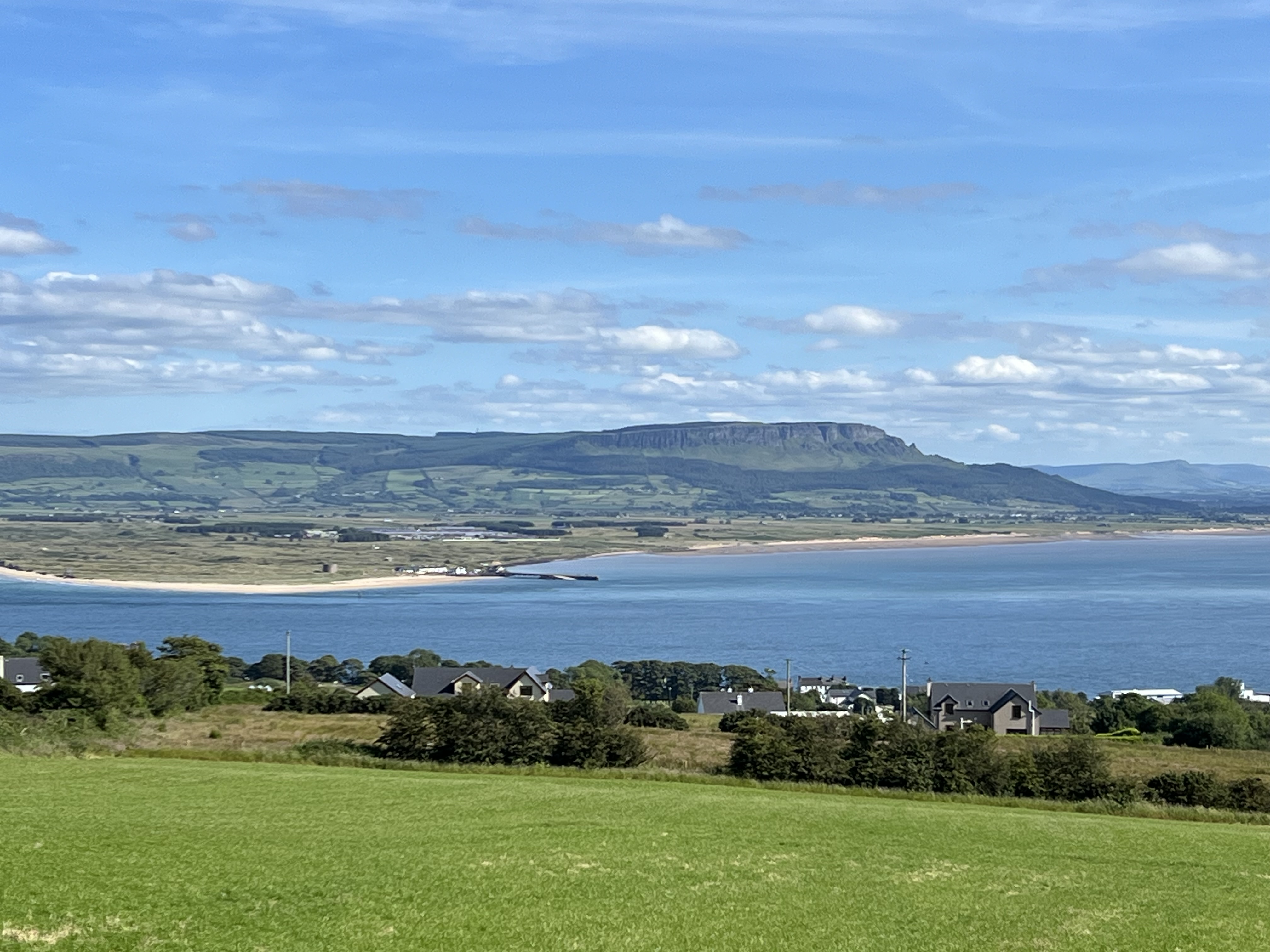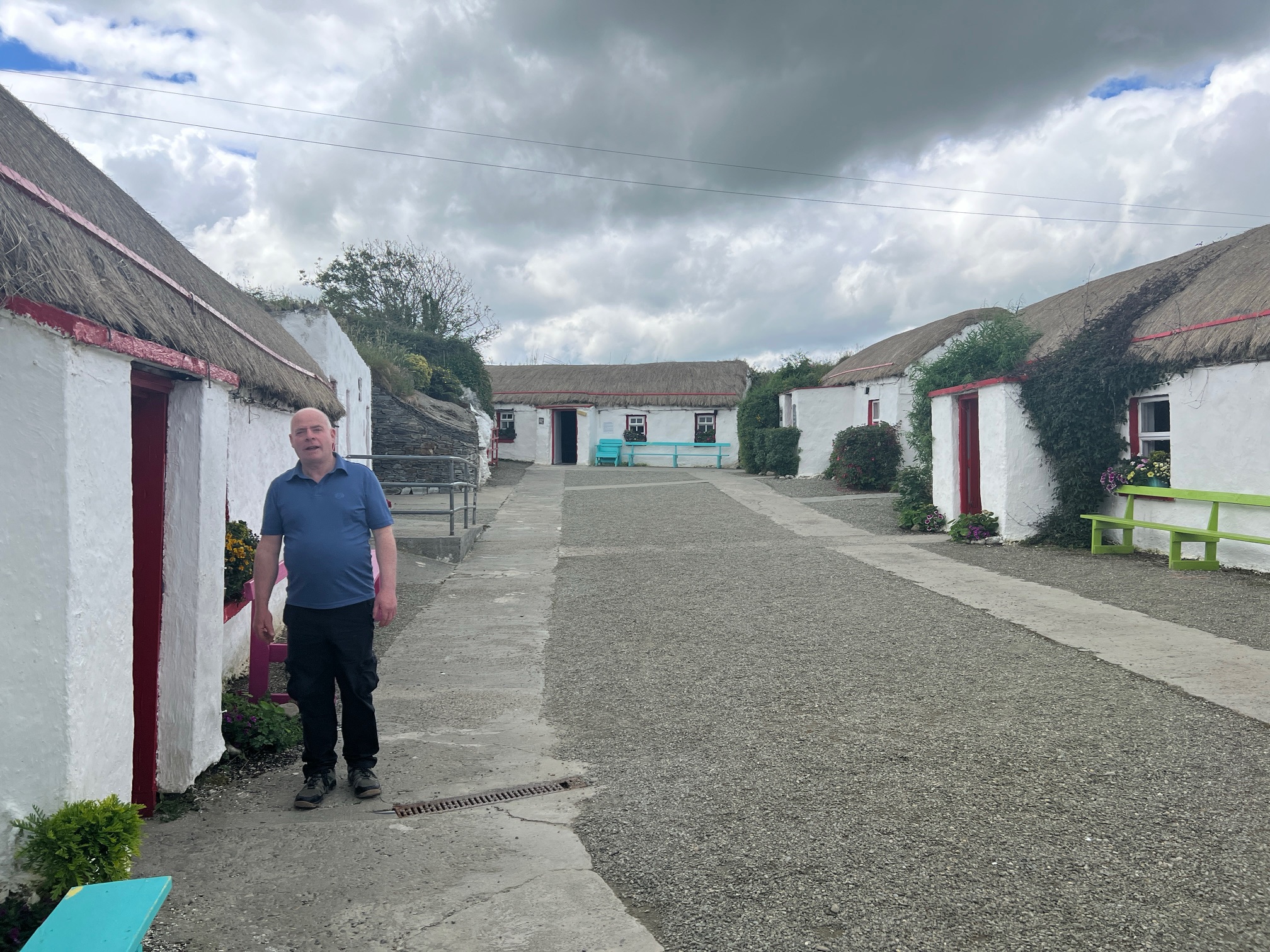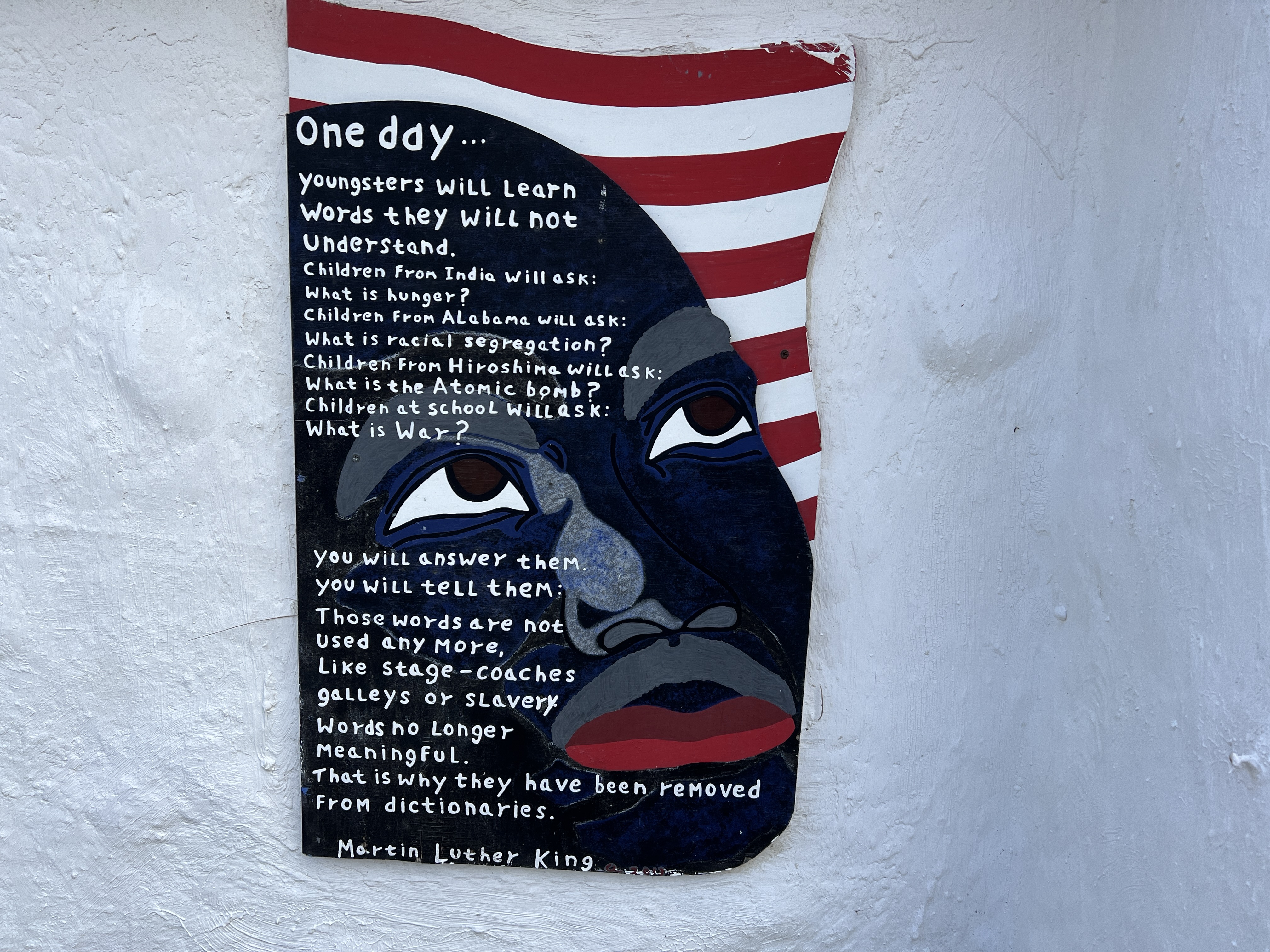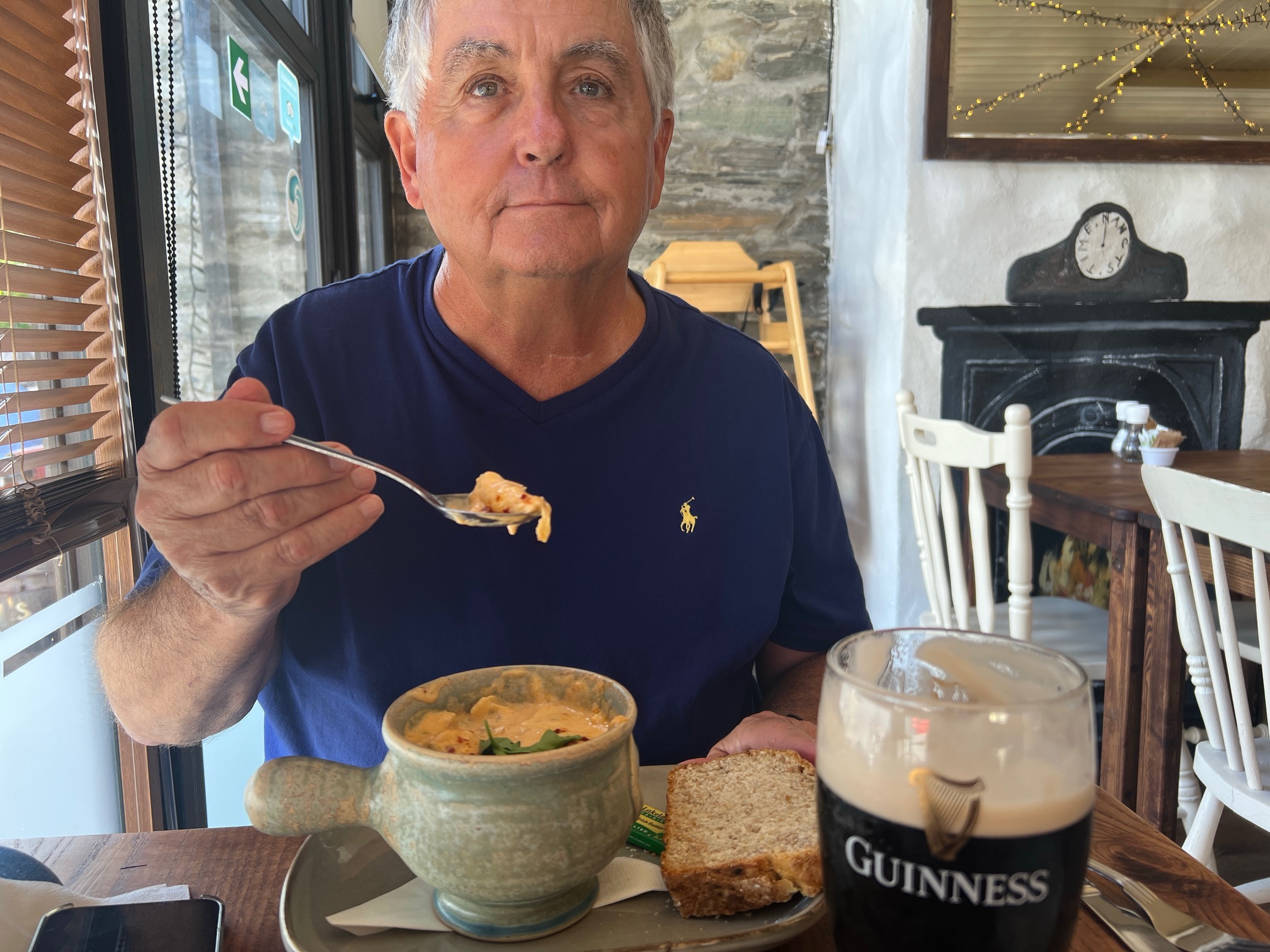After our lovely ferry ride across Lough Swilly, we drove a short distance to Temple View Lodge. Located right outside Greencastle, a small commercial fishing port, the lodge overlooks beautiful Lough Foyle.

Doagh Famine Village
Another instance of synchronicity! Paul and I had been talking about how little we knew about the potato famine. Then, as I was looking at things to do around Greencastle, I read about the Doagh Famine Village.
Doagh Famine Village tells the story of a family and community living in a remote area of Donegal and how they survived the potato famine. It covers late 19th century and early 20th century. Located on the Inishowen Penninsula, the little museum is a labor of love and dedication.

Pat Doherty, creator of the family-run museum, welcomed us and invited us in to his original family home to begin the tour. He and his family lived in the thatched-roof cottage until 1983.

Inside the little cottage, he talked about his childhood and demonstrated some of the tools they used. I loved his story about using diving rods to find water. About 1% of the people had the gift to use the divining rod.
Over the years, the family added on to the museum based on the questions visitors asked. Other buildings focused on fishing, worshiping, burying the dead and making moonshine.
In the moonshine building, we learned about poitine, basically Irish moonshine. One tiny sip of the strong drink was enough for me.

After touring the buildings, we moved to the exhibit part of the museum. Some of the exhibits are life-sized historical depictions. One showed how landlords evicted tenants and destroyed their homes when they were unable to pay the rent.

The Great Famine
We were most interested in the exhibit about the potato famine. Although I had a vague idea of the devastation it caused, I didn’t really understand how awful it was. The potato crop, upon which a third of Ireland’s population depended for food, was infected by a disease that destroyed the crop. Between 1845-52, this caused a period of starvation, disease and emigration that became known as the Great Famine.
About two million of Ireland’s eight million people emigrated during this time. With a current population of a little more than five million, Ireland’s population has not returned to its pre-famine level.
I loved the little Home of the Fairies exhibit and of course, made a wish and tossed in some coins. All the proceeds go to area non-profits.

Peace and Justice
A newer part of the museum covered The Troubles, a period of conflict in Northern Ireland that lasted from the late 60s to 1998. Pat told the difficult story of the road to peace, respecting all perspectives.
Quotes and posters throughout the museum demonstrated his dedication to peace and justice. I was so moved by his commitment to fairly telling a hard story and working to make life better for all people.


We left the museum sobered by having a stronger feeling of the suffering the Irish people experienced during this time. Our visit also caused us to reflect on the suffering so many people are currently experiencing . Focusing on suffering probably wasn’t on our list of things to do in Ireland, but we are thankful for the powerful experience.

Ballyliffin
Since we were close to Ballyliffin, Paul wanted to make a stop at the Ballyliffin Golf Club and reminisce a bit about playing there years ago.

And I wanted to eat lunch at Nancy’s Barn. In addition to many culinary awards, the cute little cafe featured world-award-winning fish chowder. I didn’t know there was an award for the world’s best fish chowder, but I thought Paul would love to try it.

Another Ferry Ride
Leaving Greencastle for the next part of our journey, we felt like ferry pros. Arriving at the dock right before departure, we were the last car to board. Last car on, last car off and we were on our way.

